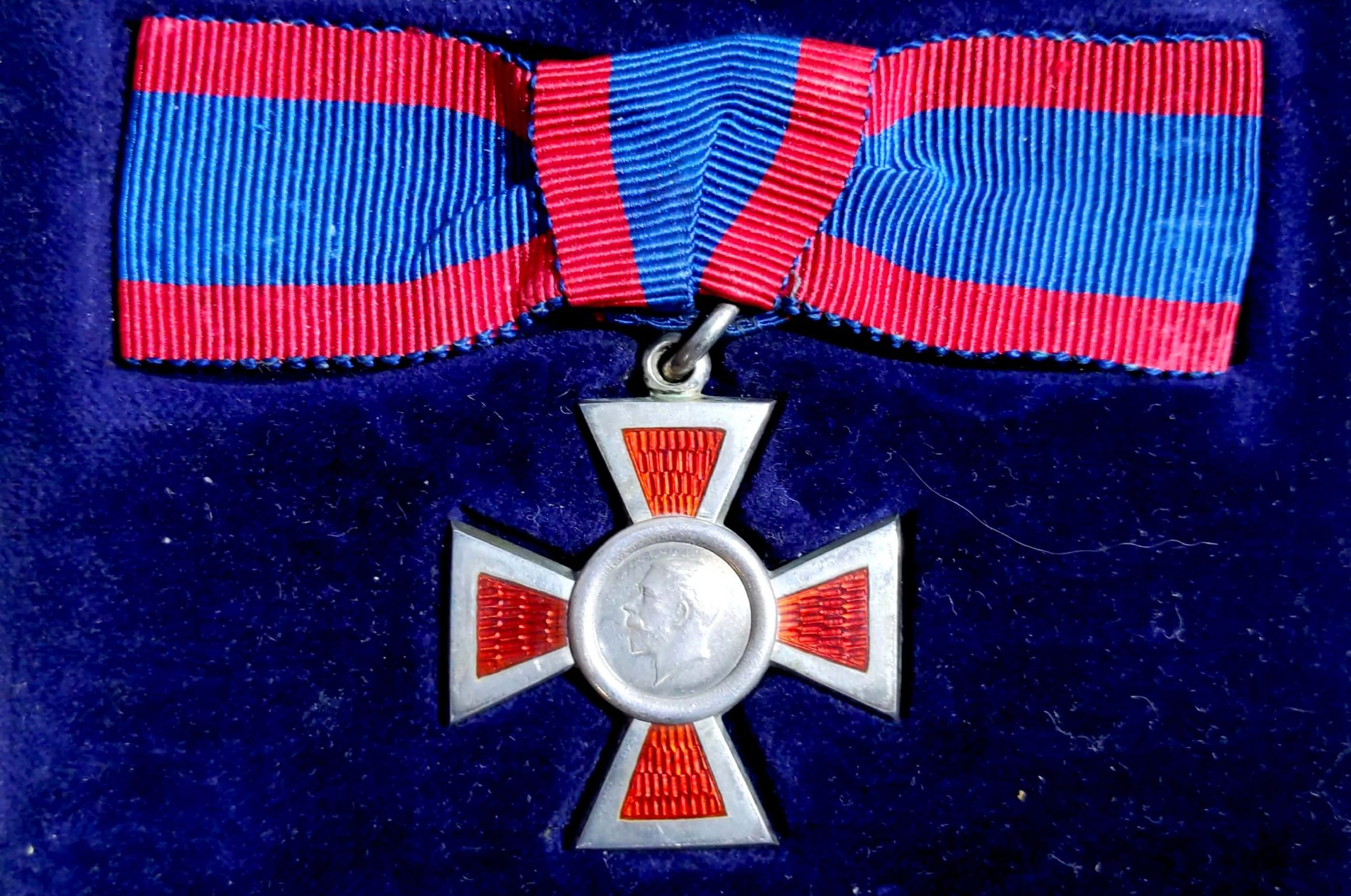The King’s Canadian Red Cross Special Hospital was located at Upper Lodge, Bushy Park, Hampton Hill, Middlesex TW12 1NE. It was a military convalescent hospital which operated from 1915 to 1919.
In 1915 King George V gave permission to the Canadian Red Cross for Upper Lodge at Hampton Hill to be used as a hospital for Canadian troops stationed in Bushy Park. The King’s Canadian Red Cross Convalescent Hospital opened on 27th December 1915 with 30 beds. By 31st December all were occupied. At first the administrative offices of the Hospital were located some 2 miles away at the Greyhound Hotel in Hampton Court. In the middle of January 1916 they moved into Upper Lodge.
It was anticipated that the Hospital would cost about £24,000 to build. On 16th March 1916, while the ward hutments were being erected and the buildings and grounds were being restored, the King and Queen visited the Hospital. As their car approached the main gate into the grounds, its wheels became embedded in mud. The Royal visitors, in good humour, completed their journey on foot. Having inspected the Hospital from cellar to garret, they complimented the Canadians on the successful restoration of the site.
The new ward buildings were constructed with asbestos walls on brick foundations. The Administrative Building was completed in April 1916. Those who had been billeted out were then moved into the mansion (senior staff) and the stables (personnel). As the number of personnel increased over the summer, tents were pitched for them in one of the paddocks. On 15th May 1916 a dental clinic was established at the Lodge. A dispensary and laboratory were later added.
By June 1916 the Hospital had hutted accommodation for 250 patients. Each hut was a complete unit in itself and independent of the wards in the mansion. The new wards were large, airy and cheerful in appearance. In another part of the grounds, a Billiard Room had been built for the patients. There was also a commodious Recreation-cum-Concert Hall – the gift of Mrs Robert Gooderham of Toronto – where patients could read, write letters, play the piano or listen to music, or play cards and other games. Canadian and British newspapers and periodicals were provided by their publishers and others. Theatrical entertainments and concerts were held in the Hall in the evenings.
By August 1916 six wings of the Hospital had been completed and equipped by the Canadian Red Cross Society. Each wing bore the name of one of the King’s children. In the autumn a large Physical Training and Gymnasium Building was added but, because of the incessant demand for more patient accommodation, it was soon fitted up as a hospital ward.
On 11th September 1916 the Hospital acquired an auxiliary hospital at Clarence House in Roehampton. Twenty patients were despatched to the new convalescent hospital but had to return as there had been a misunderstanding about opening dates. It was not until 13th October that authority for Clarence House Convalescent Hospital to receive patients was given. Forty convalescents were then transferred there and, by the end of the month, Clarence House was accommodating 100 patients.
During November 1916 the average number of patients in the Hospital and Clarence House was 436, of whom 75 were amputees.
The Canadian Red Cross Society provided food supplies for the Hospital at the daily cost of 1 shilling 5 pence (7p) per head. Comforts for the troops – cigarettes, tobacco, shaving-kit bags and other utility items, apples, games and reading matter – were also provided by the Society, as well as by the Provincial Governments. In December 1916 the local residents of Hampton Hill decided unanimously to open and staff a canteen at the Fitz Wygram Coffee Tavern for the patients.
By March 1917 the Hospital had 289 beds, with an additional 109 at Clarence House. In April both sites accommodated 375 patients, who stayed 15 days on average.
In April 1917 control of the Hospital passed from the Canadian Red Cross Society to the Canadian military authorities. By May 1917 the Hospital had 400 beds – 291 at Bushy Park and 109 at Clarence House. Special clinics were established for patients with heart disease and trench nephritis. In the autumn of 1917 a new and larger Physical Training pavilion was erected.
In October 1917 the number of beds was increased from 291 to 321 at Bushy Park and from 109 to 129 at Clarence House.
On 29th October the Hospital was renamed the King’s Canadian Red Cross Special Hospital. Its staff consisted of 12 officers and 78 other ranks. In November 1917 the Hospital had 344 beds, with 106 at Clarence House. There were 7 officers on the staff, 6 nursing sisters and 82 other ranks. By the end of the month the Nephritis Clinic had treated 464 patients since its establishment on 8th May. Of these, 71 (22%) had been invalided back to Canada. In March 1918 the Hospital had 406 beds – 300 at Bushy Park and 106 at Clarence House. By May 1918 the staff consisted of 10 officers, 6 nursing sisters, 90 other ranks and 5 civilians.
Following the end of the war the patients and personnel were gradually evacuated over May, June and July 1919. By 14th July there remained only 3 officers and 6 servicemen in residence. The buildings and wards were redecorated in anticipation of handing over the site to the LCC for use as an open-air school for children from the East End with TB and other respiratory disorders.
The Hospital was officially disbanded on 2nd September 1919.
Source: https://ezitis.myzen.co.uk/kingscanadian.html
Read the Record of Service of the Hospital:
RoS-bushey-park-middlesex